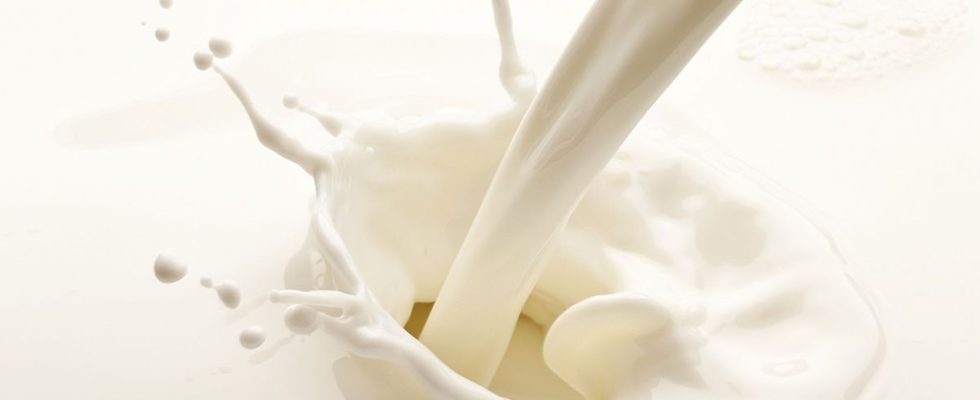Published on
Updated
Reading 4 mins.
In a bowl of cereal, in a pancake batter, or to refine the preparation of very creamy scrambled eggs… The French consumed an average of five glasses of packaged milk per week in 2022, i.e. more than 40 liters. An ingredient so essential that the Food and Agriculture Organization of the United Nations has declared June 1 as World Milk Day. At a time when more and more voices are being raised to contradict the essential nature of milk for good bone health, others are wondering about the impact of their consumption on the environment. Here is everything you need to know to choose the drink that suits your values… and your taste!
First of all, it should be remembered that the name milk can only be used to designate a product obtained after mammary secretion. This is referred to as cow’s milk, sheep’s milk or goat’s milk. In 2017, the European Court had also published a reminder on this subject to avoid any confusion with vegetable drinks. However, with almonds or rice, it is clear that in everyday language we still continue to use this name…
What is the greenest milk?
Bringing together the 15 largest meat and dairy companies could create the 10th highest greenhouse gas emitting nation, says a report by the Institute for Agriculture and Trade Policy and the Changing Markets Foundation at the end of last year. In France, including its overseas departments, activities related to dairy products are the most energy-intensive. In 2019, they were estimated to have generated 942,497 tons of oil equivalent per year, according to data from the Succeed Market magazine. On the other hand, we find oat milk which would produce 80% less greenhouse gas emissions compared to dairy products derived from animals, according to a study by Wageningen University, in the Nederlands. Water requirements are less compared to many other alternatives. We would thus use only 18% of the water provided for in the rice milk production scheme or 13% for almond milk.
However, in 2018, the American lobby Environmental Working Group, which relies on science to point out the harmful effects of pollutants, had indicated in a report the presence of glyphosate residues in oat-based products, such as breakfasts or energy bars. We are talking here about the famous herbicide most used in the world that Emmanuel Macron had promised to ban before, finally, backing down.
There are many vegetable drinks to replace cow’s milk: soybeans, almonds, rice, hazelnuts etc… But the ecological alternative is undoubtedly the homemade beverage, as recalled Conso Globe. Since all you have to do is mix the dried fruit or cereal of your choice with water to obtain the drink.
Which milk is the most respectful of animal welfare?
Can a milk really be in conformity with the principles of animal welfare from the moment when it is necessary for a cow to wait for a calf in order to produce milk? This is the argument of animal defense associations, like Peta, whose sharp speech is known. Beyond this reality, we can still pay attention to animal well-being by favoring milk labeled in organic farming. In CIWF’s view, this recognition assures consumers that animals have had access to pasture during the grass-growing period. The milk is thus not obtained from a cow that has been fed with fodder all year round. In the Pas-de-Calais, Prospérité milk guarantees that a cow can graze on at least 1,500 m2, for at least 170 days a year. The milk is also collected in Hauts-de-France within a radius of 80 km around the Saint-Pol-sur-Ternoise dairy.
What is the best milk for health?
To this question too it is necessary to bring several nuances, firstly because the benefits are different depending on whether we are talking about cow’s milk, sheep’s or goat’s milk, or if we are talking about vegetable drinks . Above all, when you ask nutritionists, you understand that each variety has its own advantages.
With regard to milk from animals, a report from the program “Enquête de santé” broadcast on France 5 last fall indicated that the benefits attributed to dairy products had been overestimated by the companies concerned. Of course, we all have in mind that dairy products are “our friends for life”. The journalist Clémence Gardeil, author on this fascinating subject, had thus commented that one could find benefits by consuming a few a day, without excess. From a nutritional point of view, specialists generally recommend semi-skimmed milk. Remember that it is the portion of lipids that differs slightly between whole, semi-skimmed and skimmed milk. If it is necessary to limit this consumption because of the saturated fatty acids, it should be known that milk also contains omega 9, as in olive oil. As for sheep’s and goat’s milk, they contain the same lactose and lipid levels as their cow’s milk counterparts. But, they may be preferred for their digestibility.
In terms of vegetable drinks, the France 5 documentary threw confusion on soy-based juices because of molecules that can disrupt the endocrine system. In 2019, 60 million consumers had already put on a layer of it as part of a comparative test between various vegetable drinks and concluded that these offered an alternative to fruit juices and not to milk. In this case, the proportions of sugars are sometimes too high.
If their glycemic index is high, oat and rice milks are recommended for their richness in vitamins. Almond milk wins the battle for fibers while soy milk provides the satiety needed to face the day, thanks to its protein proportions. Finally, it should be added that these vegetable drinks cannot replace breast or infant milk.

